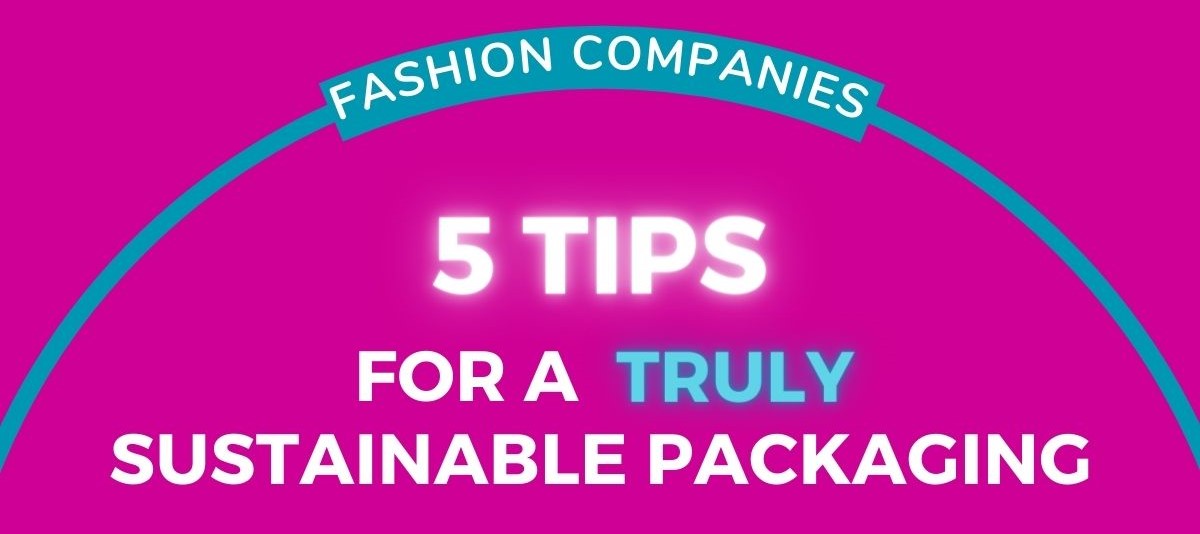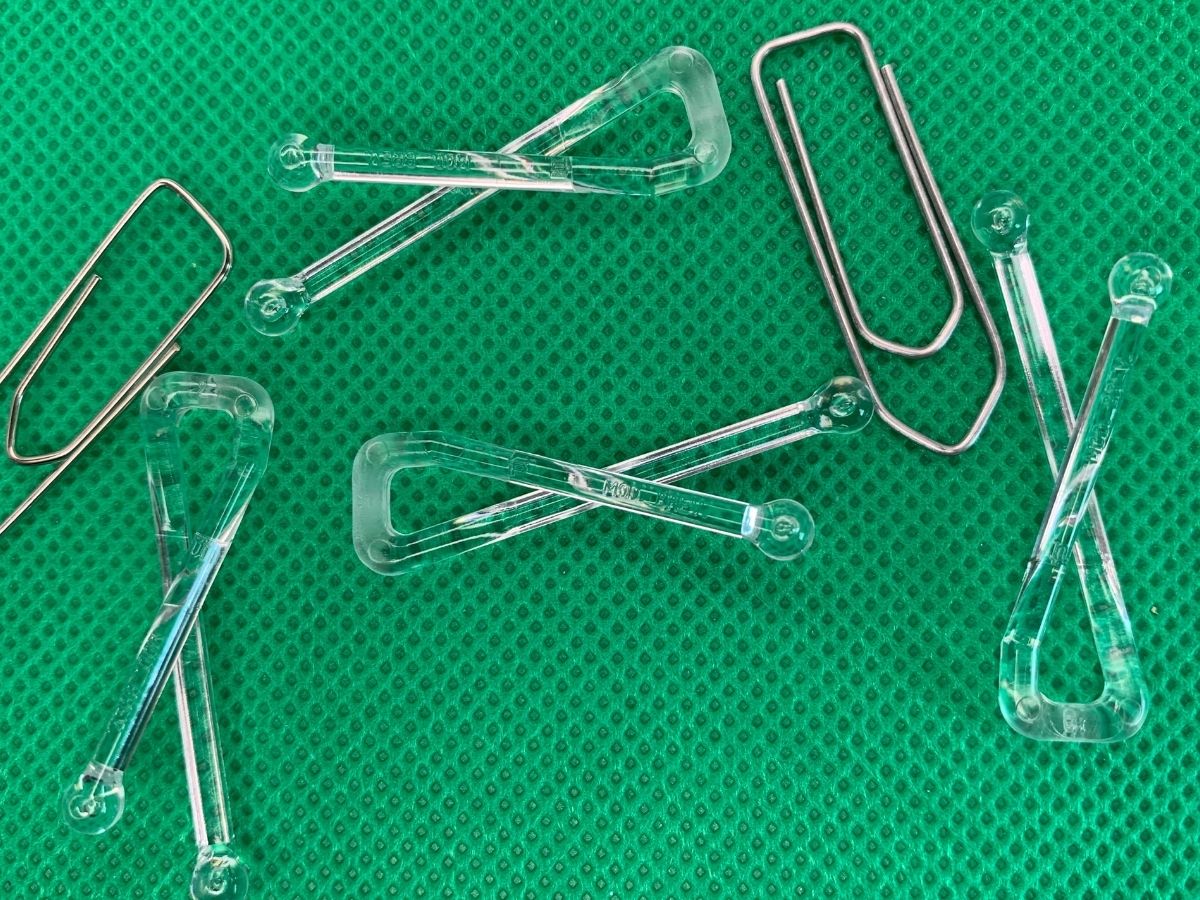5 TIPS FOR A TRULY SUSTAINABLE PACKAGING
25/05/2023
Needless to reiterate the numbers about pollution due to the impact of fashion both from an environmental and social point of view.
There has been talk of "sustainable fashion" for almost a decade now, but the changes that have occurred to what extent have improved the situation and to what extent have only stopped polluting in one way and started to pollute in another?
JUNK - Armadi pieni, the documentary co-produced by Will Media and Sky Italia and hosted by Matteo Ward told in an authentic way what happens in 6 countries around the world because of fast fashion.
This documentaty has particularly impressed us, because it uses a similar reasoning to what we try to convey since the plastic revolution began: in short, it emphasizes how fast fashion fashion companies label garments as sustainable, going to encourage actions that are anything but green, consciously or not.
Basically, if to produce t-shirts from "recycled cotton" as is the case at Panipat, highly toxic substances are used to recycle the fabric, without the slightest precautions for workers and the environment, by disposing of chemical waste in the rivers that flow through the city, the adjective "sustainable" hardly fits.
As well as it hardly fits to that production of Rayon (which is generally thought sustainable derived from wood fibers, eucalyptus) for which half of Indonesia is deforested, without mentioning the sulfocarbonism intoxications that follow.
In a similar and completely parallel way, we have been trying for years to say the same things, but with regard to the clothing accessories we have been working with since 1958.
We often find ourselves advising fashion companies customers, to direct them towards REAL sustainable choices.
Usually, a beard doesn't make a philosopher, but when it comes to bio labels, it almost seems that the saying does not apply.
So here 5 tips for fashion companies for a REALLY more sustainable packaging:
- Stop with compostable products;
- Reuse > Recycle;
- Communicate and inspire customers on how to reuse;
- No cotton hang tag string
- Quality > Quantity
1. Stop with compostable products
Most of our customers prefer products in compostable plastic: it is possible to make them, but it is not the most ecological choice, especially in Italy!
It prefers compostable plastic since it is a plastic that derives from renewable sources (corn in this case), and has the characteristic of decompose, IF properly stored of the separate collection in the wet and treated through composting sites (no need to stress this, but if dispersed in nature and without treatment, degradation times are comparable to traditional plastic).
So it becomes the burden of the fashion company to tell its customers to throw the packaging in the humid separate collection...
But even assuming a "correct" collection, most of the organic waste in Italy ends up in plants that are not able to effectively treat compostable, finding themselves in landfills, in sustainability face.
Luca Mariotti, the director of Utilitalia, says that plants able to effectively treat compostable plastics are less than half of those existing in Italy. In this way, a great bias has been created between what is experienced in the laboratory (where compliance with UNI EN standards on compostability is verified) and what actually happens in the plants, creating a distorted expectation to the consumer.
Therefore, it is definitely not enough to use biodegradable or compostable plastic to be sustainable, as most of the time it is the least suitable material.
2. Reuse > Recycle
The second material most requested by our customers is the recycled plastic..
Although this choice may be more sensible than the hypothesis proposed before, it is not yet 100% "sustainable".
In fact, whether recycled or compostable plastic is used, we always talk about single-use: packaging is used only once, regardless of how it is then disposed of.
What we need to focus on is waste prevention.
Recycling or composting should not be taken as good solutions regardless.
As Laura Collacott (freelance editor) says in a content published by MacArthur Foundation, recycling is essential, but only after reuse:
"The longer life an article has, the better because it preserves not only the material of which it is composed, but also the work and energy used to produce it".
Starting from this reasoning that we fully share, in PIR.SA.FA. we provided for the gradual replacement of the molds that generated waste to produce our accessories (since we belive that is better to do not produce waste instead of recycling it). Today, most of the items are created without generating production waste; in the remaining cases, they are recycled and reintroduced into the production cycle.
In addition to the internal waste, bottle caps, ice cream cups and other items from the local collection are recycled daily, since thay are not suitable for reuse.
3. Communicate and inspire customers on how to reuse
Final consumers are also key players in the success of a circular economy.
Although each of us must independently reason and act in a more appropriate way to not pollute and generate as little waste as possible, some advice does not hurt anyone.
So to reconnect and complete step 2, it is crucial that end consumers are aware that many of the accessories that make up clothing packaging are reusable.

For example the crossover clips PIR.SA.FA. super used to pack shirts, has been patented with a double function: the primary and classic for packaging, while its secondary function is to act as a paper clip that we all use!
Likewise, the sizemarkers are reusable over and over again until broken, especially the square ones produced with an even more resistant material to be removed and re-inserted into the hangers an infinite number of times.
Many other pills on how to reuse our products can be found on the page REDUCE, REUSE, RECYCLE.
4. No cotton hang tag string
Other accessories that often mislead customers are the microseals and security seals for tags.
The fashion of the moment wants these accessories with cotton strings, because look more "green"... quite the opposite!
The most eco-friendly choice that takes into account the function of the hang tag string is the traditional plastic (PS6 100%), with 100% NYLON cord (then plastic!).
Nylon? Isn't that a synthetic fiber?

Yes, it is a synthetic and recyclable fiber and we do not recommend it absolutely, but for the hang tag string / seal tag, as it allows that once removed the tag (so broken permanently and obviously no longer reusable (thank God!)), the entire product is thrown into the plastic and recycled.
The reason is widely explained in our previous newsletter: in short, if the cord was made of cotton / rayon or any other material, should be given instructions to the consumer for let them separate the cord from the body of the seal (which being melted inside, a minimum will always remain), and stows the two parts according to the correct separate collection.
Surely complicating things does not help!
5. Quality > Quantity
The last point summarize the previous four in some ways: it is an invitation to all fashion companies, but more specifically to all people, to appreciate and encourage the quality of our Made in Italy, and prefer it to what that can be purchased with the same amount of money in other countries.
It was explained very well in “Indovina chi viene a cena", Sabrina Giannini's program, in which they faced the harsh reality of slogans and sustainable initiatives in very polluting sectors such as the fashion industry.
Here the concept of reuse again: it is better to buy a garment, (or in our case a sizemarker) of good quality and produced with excellent raw materials at higher prices, rather than one at less than half the price, that after 2/3 uses and washes is to be discarded (or even break).
We reiterate that these concepts should be applied in relation to the clothing accessories we produce.
For any doubt or more information, please contact us at pirsafa@pirsafa.com
Instagram | Facebook | LinkedIn
PIR.SA.FA. team
Sizemarkers That Last a Lifetime: How to Extend Their Lifespan!
10/04/2024Sizemarkers for hangers are traditionally accessories made of plastic, intended to facilitate and speed up the size identification process, allowing for time savings and immediate product visualization. Plastic is known...
Metal Shirt Clips: Galvanizing and Invisible Risks
21/02/2024Dear Consumers, today, we want to address an important yet often overlooked topic in the textile industry: the harmful effects of galvanic coating on traditional metal shirt clips, and how...
A New Chapter: the FP logo registered by PIR.SA.FA. S.R.L.
06/02/2024A New Chapter: the FP logo registered by PIR.SA.FA. S.R.L. We are excited to share exciting and significant news: PIR.SA.FA. S.R.L. has officially registered the Italian trademark "FP".This is a...
General conditions
Privacy policy - Cookie policy - Cookies Settings - Powered by L&L Comunicazione - Admin

 ES
ES  IT
IT EN
EN FR
FR DE
DE